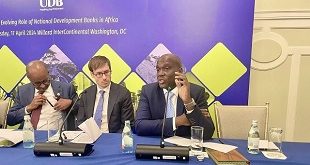
By Andrew M. Mwenda
At 71 members strong, Uganda has the third largest cabinet in the world after North Korea and Kenya. This is in circumstances where the global average of ministers is 30. The average for Sub-Saharan Africa is 40. Even by regional standards, apart from Kenya, the average in the East African community is 30 as Tanzania has 34, Rwanda 27 and Burundi 29. Even among Africa’s oil producing countries, Uganda retains the gold medal – only Nigeria comes close with 54 cabinet ministers. The rest of the oil producing countries have ministers in the mid 40s.
Uganda vs global and average cabinet sizes
 The question then, why is Uganda such an outlier? One could suggest that this is because of the country’s ethnic diversity. However, Uganda is not more ethnically diverse than Nigeria, the Democratic Republic of Congo or Tanzania all of which have fewer ministers. Is there something unique about Uganda’s ethnic configuration and politics that explains this discrepancy? One could argue that the contours of a country’s politics are determined by its history most especially the institutional legacy of colonialism.
The question then, why is Uganda such an outlier? One could suggest that this is because of the country’s ethnic diversity. However, Uganda is not more ethnically diverse than Nigeria, the Democratic Republic of Congo or Tanzania all of which have fewer ministers. Is there something unique about Uganda’s ethnic configuration and politics that explains this discrepancy? One could argue that the contours of a country’s politics are determined by its history most especially the institutional legacy of colonialism.
It is true that although more ethnically diverse than Uganda, Tanzania did not have deeply entrenched ethnic politics like Uganda. That is why at the time of independence, Tanzania developed a large single party that captured all but one seat in the 121 member legislature in 1961.
But DRC and Nigeria have an institutional legacy of tribally organised politics that is worse than that of Uganda. Besides, for whatever its weaknesses, immediate post independence Uganda was not divided along ethnic lines as it was along religious ones – between Catholics and Protestants.
The two major political parties to emerge in pre-independence Uganda were the Democratic Party (DP) which was rooted in the Roman Catholic Church and the Uganda Peoples’ Congress (UPC) which was, by default, favored by Anglican Protestants and Muslims. Thus, both UPC and DP were able to win seats across the country irrespective of ethnic groupings.
 In the April 1962 elections, for example, UPC and DP each took 50 percent of the seats in Acholi and in Ankole. The two parties shared West Nile with UPC taking three seats, DP taking two. While DP captured Toro, UPC captured Bunyoro. The two shared Kigezi; the same applied to the east. Throughout their history, UPC and DP retained substantial support across the country with only Buganda being an exception; because here, the forces at Mengo had capacity to tilt support for either of the two parties.
In the April 1962 elections, for example, UPC and DP each took 50 percent of the seats in Acholi and in Ankole. The two parties shared West Nile with UPC taking three seats, DP taking two. While DP captured Toro, UPC captured Bunyoro. The two shared Kigezi; the same applied to the east. Throughout their history, UPC and DP retained substantial support across the country with only Buganda being an exception; because here, the forces at Mengo had capacity to tilt support for either of the two parties.
The most prominent critique of the two parties’ organisation has been Yoweri Museveni who has consistently argued that they were based on tribe – an obvious fallacy. And the first Ugandan leader to reorder national politics from religion (which was cross-cutting across the ethnic divide) was Museveni. It is during the National Resistance Movement’s struggle in Luwero that Museveni articulated a fresh fault line of division i.e. between the Bantu dominated South and the Nilotic dominated northern part of the country.
It is possible therefore that Museveni’s obsession with ethnic politics also explains the increasing tribalisation of politics in Uganda; the fragmentation of the country into myriad districts; but it does not explain his size of cabinet. Because the size of Uganda’s cabinet does not so much reflect and attempt to include every ethnic group. Rather it shows the attempt to consolidate support among those ethnic regions that support the ruling party. Rather than ethnicity, it may be the nature of political strategy that may explain the size of cabinet. To understand this, we need to look at the wider state structure in Uganda.

| The Uganda cabinet by region |
 |
In the late 1980s and early 1990s, Uganda was Africa’s beacon of hope; for it was in this country that the most thoroughgoing reforms not just in regard to the economy but the politics took place. Museveni accepted to liberalise, privatise and to deregulate the economy. This meant shifting control of key economic decisions from the state to the private sector. However, this was not merely a technical reform of the economy. It was also a revolutionary reordering of the nation’s politics.
Previous governments had used state control of the economy to build political support. They would reward their supporters or buy off real and potential opponents with jobs in the public sector. Onerous controls on the economy gave the state power to decide who got a license to invest or trade; so only loyalists would prosper. Museveni did not only roll back the state from controlling most economic activity, he also began reducing the size of cabinet, the civil service, and the army etc.
Thus between 1992 and 1995, Uganda’s cabinet fell from 78 to 40; the army from 100,000 to 40,000; the civil service from 278,000 to 146,000 and the public enterprises sector from 150 parastatals to 43. However, beginning with 1996 to the present (i.e. 2011), things began to change in the opposite direction; the civil service, the number of districts, the size of parliament, the number of presidential advisors, the size of cabinet and the number of semi autonomous government bodies begin to grow. It is therefore not only the cabinet that has grown but the size of government.
While the official army did not grow, the number of auxiliary forces grew from zero to 78,000; the number of districts from 33 to 114, the number of semi-autonomous government agencies from 11 to 178, the number of presidential advisors from six to 124, the number of security organisations from 12 to 36 by 2009 and the size of the civil service from 146,000 in 1995 to 320,000 in 2010. All this growth is largely reflected in a budget item called “public administration budget” (i.e. political patronage) which has grown from Shs… in 1995 to Shs… in 2010.
The fact that government shrank between 1992 and 1995 and began to expand again after 1996 is not an accident. In 1996 is when President Yoweri Museveni entered electoral politics. It is the strategy that Museveni adopted for winning support that explains the growth in government (political patronage) generally and cabinet in particular. It is in focusing on this strategy that we can understand today’s Uganda.
To win particular ethno-regional constituencies, Museveni adopted a duo-pronged strategy. On the one hand he would co-opt influential political elites – opinion leaders, traditional notables and religious clerics – using private goods like government jobs, contracts and opportunities to profit from corruption. But he would also deliver some dividends to the masses in form of public goods like roads, schools, health centers, bridges; welfare dividends like UPE, USE and agricultural extension services; tax relief like the abolition of market dues and graduated tax; and private goods in form of cash envelops, and sugar and salt during campaigns.
The strategy for winning over powerful elite constituencies using private goods seems to be in competition with the strategy of winning over the masses using public goods. The resources spent enhancing the power, privileges and status of elites in form of salaries, allowances, cars, scholarships for their children to study abroad, medical evacuations for them and their families to hospitals abroad, and the opportunities to profit from corruption erode the institutional coherence of the state to deliver public goods and services effectively and efficiently to the masses.
It is here that ethnicity becomes important. The interests of elites seem to be inconsistent with the interests of their constituents. The elite want high private returns (high paying jobs, opportunities for corruption, bigger cars etc) for their support; ordinary masses would best benefit from state programs if the public returns for their support are high i.e. when there are good hospitals, schools, roads and agricultural extension services.
Although the economic and welfare interests of elites and the masses are in conflict, these same elites are the bridge that links the president to their local communities for support. How do elites reconcile this conflict? It is by appeal to identity – ethnic or religious. Identity creates a common emotive ground between elites and the masses and this helps obscure the economic and class differences between the two groups.
Elites construct their presence in government as a sign that their tribe or religion is represented in the high councils of power. Ordinary people see in the success of their kith and kin an image of their own future – and nothing is more inspiring than this. Witness how all black people across America, the Caribbean and Africa celebrated the election of Barack Obama as president of the USA. The symbolic value of Obama’s election is more than any number of hospitals or schools that America would have to build in Africa.
In Ghana, political elites tend to build magnificent mansions on top of hills in the countryside. Yet around them are ordinary people living in poverty and misery. However, most of these elites who live in opulence amidst this poverty are elected politicians. At first sight, this practice seems self-defeating i.e. that the masses would be angry at their elected representative when the private returns to him or her for sitting in parliament are highly disproportionate to the public returns to the electorate.
However, when you examine the dynamics in Ghana (and actually Uganda,Kenya, Zambia, Senegal, and Ivory Coast), you get an intriguing answer. First, to legitimise their wealth, wealthy elites indulge in exaggerated demonstrations of generosity. They host lavish feasts where the masses are treated on meat and chicken and alcohol; they give charity to the poor neighbours whenever they are in difficulty; they pay fees for a few children in the village; they help some get jobs in the capital city etc.
It is through these acts of generosity that elites legitimise their wealth among their impoverished kith and kin. But their public displays of wealth also offer hope among the tribe that their sons too can grow to attain such feats of wealth and status. Therefore, a strategy of co-opting elites, even when it diminishes the state’s capacity to deliver public goods and services to the masses, remains a more cost-effective strategy of building successful political coalitions to win elections in Africa.
There is no president in Africa more versed with the dysfunctions of this kind of politics than Museveni; for we must remember that Uganda is blessed with an intellectually robust president. If, therefore, there was to be reform of Africa politics from this neo-patrimonial approach to elite accommodation at the expense of the masses, it is Museveni who would be the reformer. How can it be that Africa’s best hope for reform is the same leader who has presided over one of the most elaborate neo-patrimonial systems in contemporary Africa?
Nobel laureate Douglas North argued that states, economic systems and social systems constitute complex and closely interconnected wholes; so change is difficult to achieve. What often happens is that inefficient economic systems persist for long periods of time following a path determined by earlier institutional choices. North called this “path dependency”. Therefore, “path dependency” refers to cases where initial choice of a particular technology locks an economy into a sequence of adaptive technologies that block the adoption of more efficient technologies.
Economics teaches us that entrepreneurs seek to maximise profit and consumers to maximise utility. It seems obvious that politicians would seek to maximise power. Therefore, the primary objective of any politician is to gain, hold and retain power for as long as possible. If a president can do this by buying off a few elites, that is certainly a more cost effective strategy than spending a lot of time and money building political institutions and promoting public policies that ensure that all citizens are saved.
From this perspective, it seems that when Museveni came to power, he looked around for examples to guide his strategy of political consolidation. The most successful African leaders he saw – Omari Bongo of Gabon, Nansingibe Eyadema of Togo, Mobutu Sese Seko of Zaire, Daniel arap Moi of Kenya and Paul Biya of Cameroun offered him a good insight into how to organise power, how to exercise it and how to retain it. Africa’s best revolutionary hope turned into the most conservative of leaders. Uganda descended down a path dependant on the strategies of Mobutu, Moi, Bongo, Eyadema and Biya.
 The Independent Uganda: You get the Truth we Pay the Price
The Independent Uganda: You get the Truth we Pay the Price


